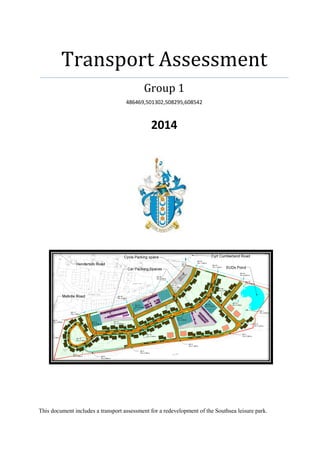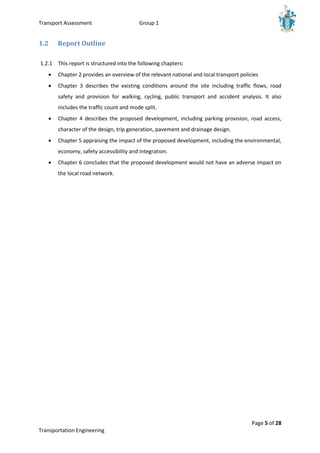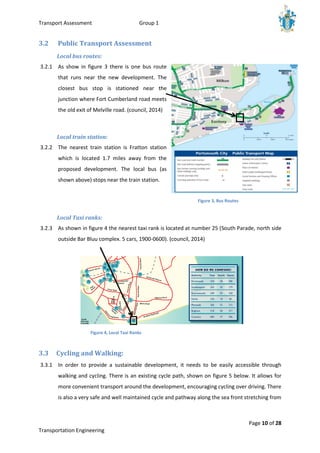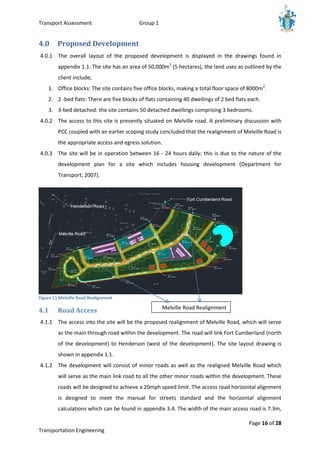This document provides a transport assessment for a proposed redevelopment of a leisure park site in Southsea, Portsmouth into residential and office uses. It summarizes the existing transport conditions around the site, including public transport access, walking and cycling routes, and accident rates. It then describes the proposed development and assesses the impact on transport, including trip generation, access, parking, and drainage. The assessment concludes that the development would not adversely impact the local road network.



























